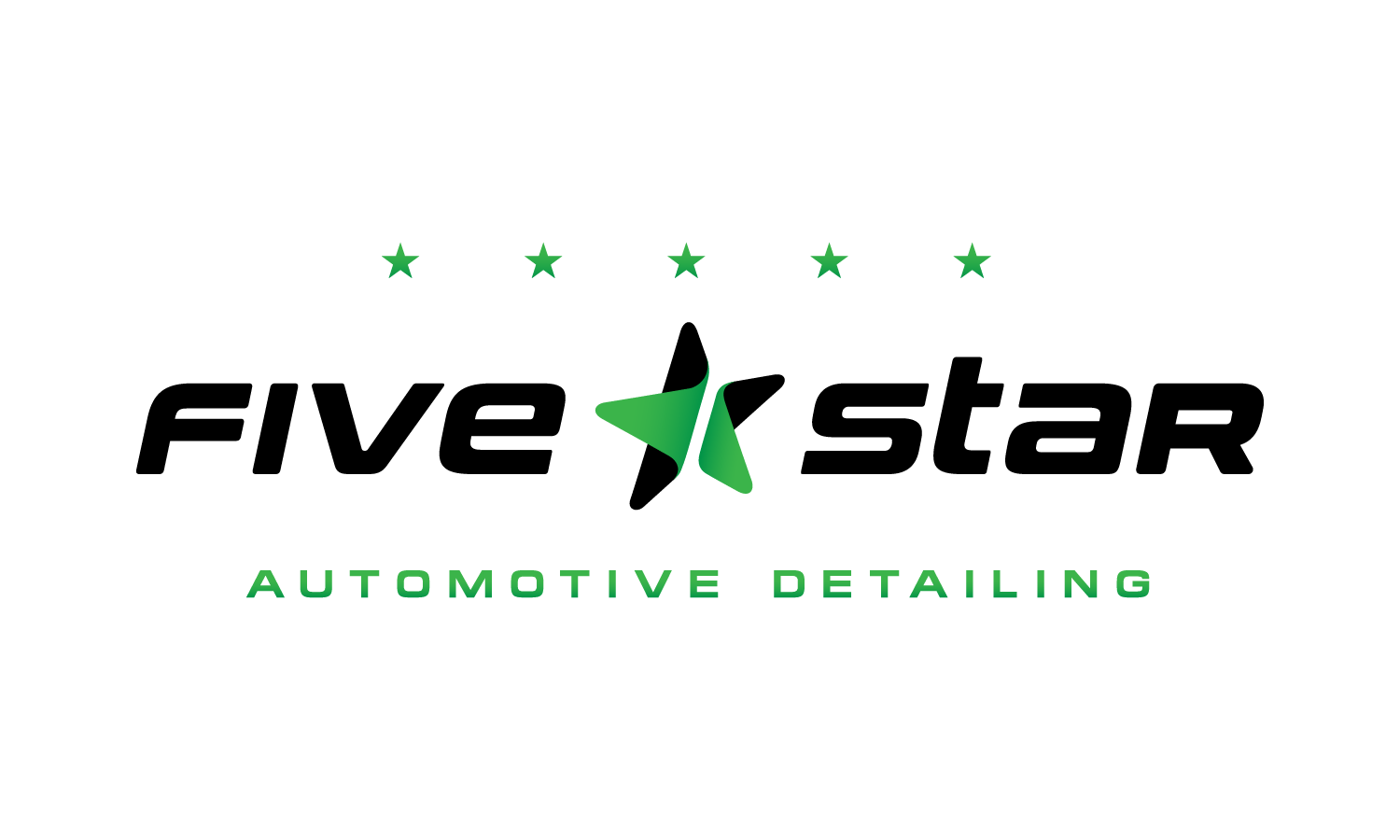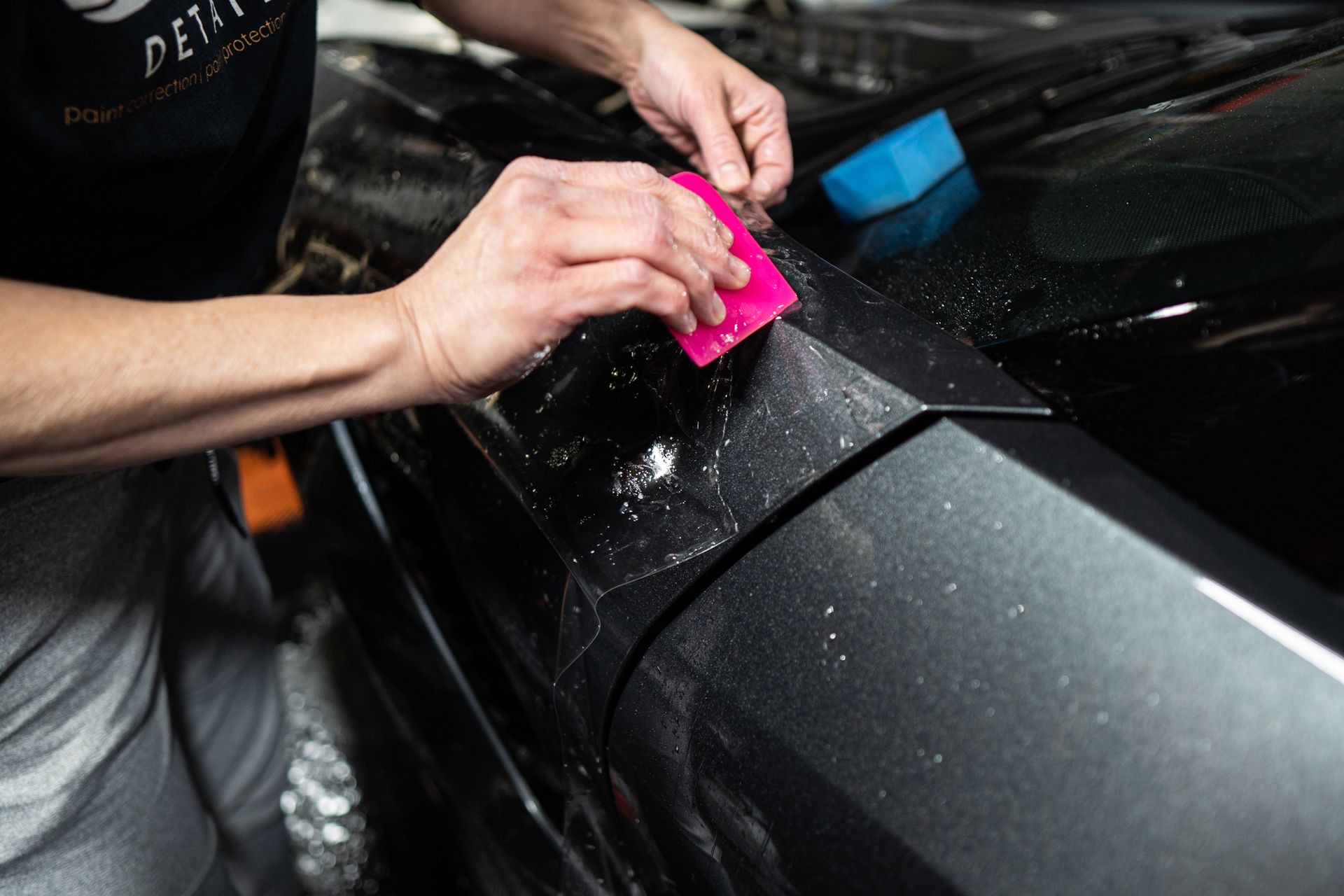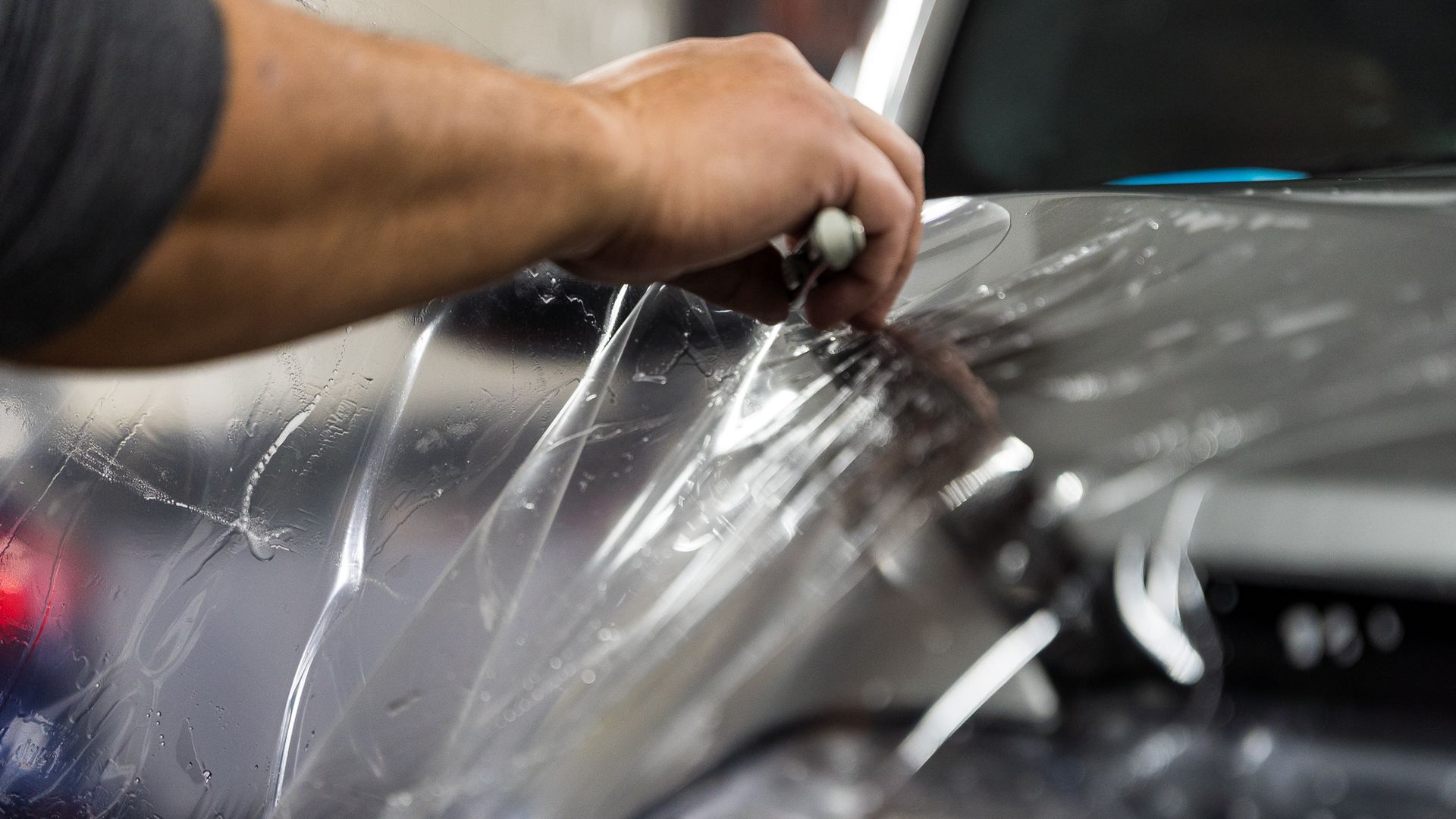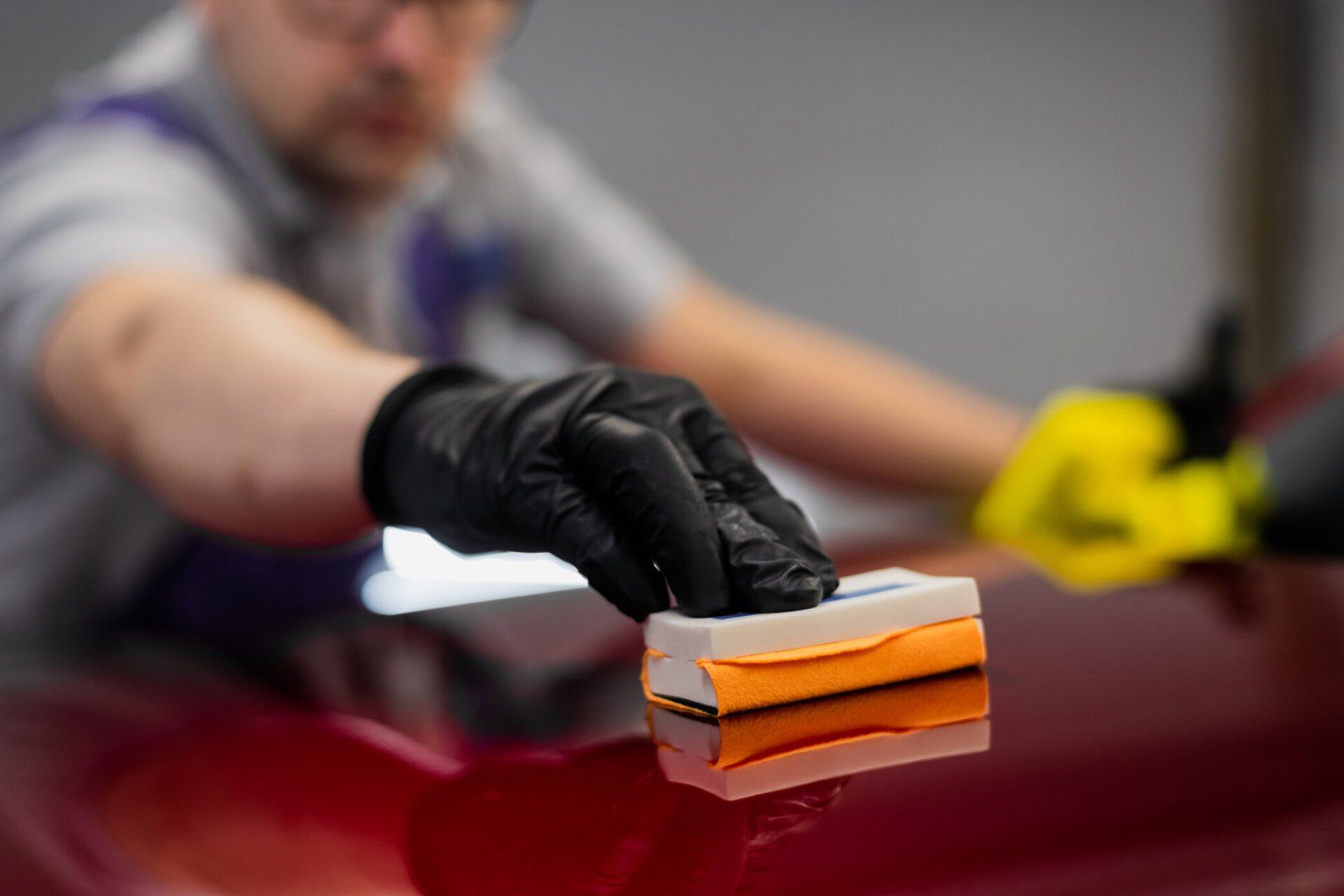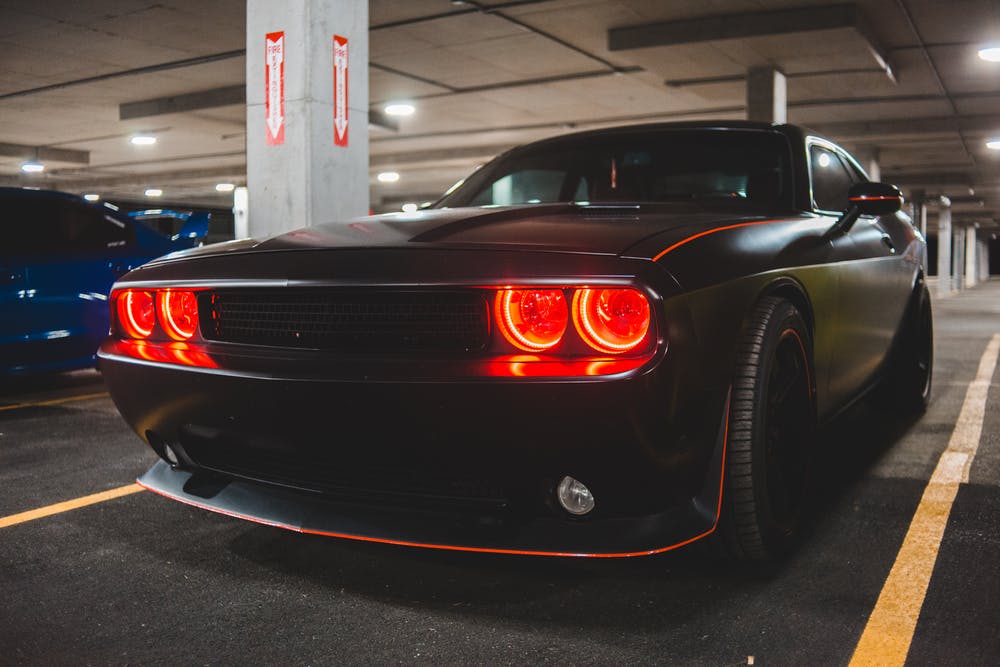The Ultimate Guide to Mastering PPF Maintenance: Essential Tips and Techniques
BOOK NOWMaintaining the paint protection film on your vehicle is all about regularity and consistency. The key task in this process is washing the vehicle weekly, as this routine helps remove surface contaminants like dust, dirt, and bird droppings that, over time, can degrade the protective film. Remember, keeping your car spotless isn't just about aesthetics; it's a crucial part of its overall health.
Mastering paint protection film maintenance requires regular washing every 1-2 weeks using a gentle hand washing method and dedicated car soap designed for clear bras. Additionally, applying a ceramic coating on top of the film can provide additional protection and make maintenance easier, ensuring optimal performance and longevity.
Establishing a Regular Maintenance Schedule for PPF
Establishing a regular maintenance schedule for your paint protection film can make a significant difference in its longevity and the protection it provides your vehicle. Let's break down the key elements of this schedule to ensure your PPF receives the care it needs.
Weekly Washing: Consistent cleaning is crucial for maintaining your paint protection film. By creating a weekly routine for washing the vehicle, you can effectively remove surface contaminants like dust, dirt, and bird droppings that can degrade the protective film over time. Using a gentle hand washing method and dedicated car soap designed for clear bras is recommended for PPF maintenance. This helps prevent scratches or damage to the film while effectively getting rid of any stubborn stains or debris. Neglecting this step could lead to premature wear and damage to the film, significantly reducing its lifespan.
Bi-Monthly Inspection: In addition to regular washing, performing a thorough inspection of the paint protection film every two months is vital. This allows you to check for any signs of damage or wear that need attention. Early detection of issues can be addressed promptly, preventing further damage and saving you from costly repairs or replacements down the line. Pay close attention to any areas where road debris or other environmental factors may have impacted the film during this bimonthly inspection. Also, keep an eye out for signs of peeling, lifting, or discoloration that may indicate potential issues with the film's integrity.
Proper maintenance of your PPF not only protects your vehicle's investment but also ensures its longevity and performance. By adhering to a regular maintenance schedule, you can prevent premature wear and damage to the film, ultimately saving time and money in the long run.
Selecting Suitable Tools for Paint Protection Film Care
When it comes to maintaining your paint protection film, using the right tools is crucial to ensuring effective and safe cleaning. Let's take a closer look at the most suitable tools for PPF care, starting with:
Microfiber Cloths
One of the most essential tools for paint protection maintenance is high-quality microfiber cloths. These cloths are specially designed to be gentle on the film's surface, reducing the risk of scratching or marring. Their ultra-fine fibers effectively trap dirt, grime, and residues without leaving lint behind, making them ideal for cleaning and maintaining PPF without causing damage. The soft texture of microfiber cloths ensures that they do not create micro-scratches on the film, preserving its clarity and shine. When selecting microfiber cloths for PPF care, opt for a size of 16" x 16", which provides ample coverage while allowing for easy handling during cleaning. Remember, investing in high-quality microfiber cloths is an essential aspect of ensuring proper paint protection film maintenance and longevity.
Dedicated Car Soap
In addition to using microfiber cloths, it's important to choose a car soap specifically formulated for use on your paint protection film. Dedicated car soap designed for clear bras offers a gentle yet effective cleaning solution that helps remove contaminants without compromising the integrity of the film. These specialized car soaps are formulated with ingredients that are safe for PPF, ensuring that they do not cause discoloration or degradation over time. They provide thorough cleansing while preserving the visual appeal and protective properties of the film. This dedicated approach to cleaning not only maintains the appearance of your clear bra but also contributes to its long-term durability. When using dedicated car soap for PPF maintenance, it's recommended to follow expert guidelines and techniques to achieve optimal results. The use of a two-bucket method with dedicated car soap enables thorough yet gentle cleaning, safeguarding the integrity of the paint protection film.
By incorporating these suitable tools and products into your paint protection film maintenance routine, you can effectively preserve the appearance, performance, and longevity of your paint protection film, ensuring sustained protection for your vehicle's exterior.
Effective Cleaning Techniques for PPF
The two-bucket method is a well-established technique for maintaining your vehicle’s paint protection film in its prime condition. It's straightforward yet remarkably effective. One bucket holds clean, soapy water, while the other contains plain water for rinsing your wash mitt or sponge. This approach reduces the risk of reapplying contaminants to the film, maintaining its cleanliness without inadvertently picking up dirt from the dirty water in a single bucket. Think of each bucket as a vital step: the first is where you dip your mitt to get soapy, and then you rinse off any dirt in the second before loading it with more suds.
Grit guards are indispensable aids that significantly enhance the effectiveness of this method. Placing grit guards at the bottom of the wash buckets prevents dirt, debris, and other abrasive particles from being transferred back onto the wash mitt or sponge after rinsing. Visualize this as a protective barrier, separating harmful particles from coming into contact again with your cleaning tools. By incorporating these simple yet effective measures, you ensure a cleaner wash every time, maintaining the pristine condition of your valuable PPF.
By integrating these techniques into your regular PPF maintenance routine, you're not only enhancing the overall appearance of your vehicle but also proactively safeguarding your investment in automotive protection. Regularly using these methods will help preserve your paint protection film's longevity and effectiveness, allowing it to continue providing optimal protection for your vehicle's paintwork.
Scratch Removal and Surface Preparation for PPF
Paint protection film is an outstanding investment for your vehicle, shielding it from scratches, chips, and other damages. Nonetheless, over time, the film itself may develop light scratches and become contaminated with bonded debris, which can reduce its protective capabilities. Hence, specialized scratch removal and surface preparation methods are vital to restoring the film's functionality and preserving its aesthetic appeal.
When it comes to removing light scratches from PPF, using specialized cleaners formulated specifically for the film is crucial. These non-abrasive cleaners are safe for the film, effectively eliminating stubborn residues without compromising the protective properties of the film. It's essential to select products designed exclusively for PPF to ensure that the film remains intact and fully functional after cleaning. A popular approach involves using a mild cleaner along with a microfiber cloth to gently buff out light scratches. This process effectively removes minor imperfections while maintaining the integrity of the film.
Moreover, periodic use of a clay bar designed specifically for PPF is highly recommended to address bonded contaminants that can accumulate on the film's surface over time. A clay bar treatment helps eliminate stubborn debris and prepares the surface for sealant or ceramic coating application while restoring the film's smooth finish. The clay bar treatment is an important step in maintaining a paint protection film, as it ensures that any bonded contaminants are safely removed without causing damage to the film. By incorporating this process into your maintenance routine, you can effectively preserve the clarity and protective qualities of the PPF.
Applying Sealers for Maximum PPF Protection
After investing in paint protection film to safeguard your vehicle's paint from scratches and environmental damage, it’s crucial to maximize its protective capabilities. Sealers come into play, offering an additional layer of defense against elements that can deteriorate the film over time. Let’s explore the key types of sealants and their functions to maintain and enhance the performance of your PPF.
Ceramic Coatings
Ceramic coatings designed for paint protection film provide an advanced layer of protection, augmenting the film's ability to repel dirt, water, and other pollutants. These coatings create a durable barrier on top of the PPF, helping to preserve its glossy finish and resist contamination, thus making cleaning and maintenance easier. These ceramic coatings work by bonding with the molecular structure of the film, forming a strong shield against external aggressors.
The hydrophobic properties facilitate self-cleaning, where water droplets easily roll off the surface, carrying away any dirt or contaminants while maintaining the clarity and cleanliness of the clear bra. Moreover, ceramic coatings offer exceptional UV protection, shielding the paint protection film from sun exposure. By mitigating UV-induced degradation, these ceramic coatings help prevent discoloration and maintain the optical clarity of the film over time.
UV Protection Sealants
In addition to ceramic coatings, UV protection sealants guard against sun damage—a critical consideration in maintaining the longevity and appearance of PPF. Sun exposure can lead to discoloration and reduced effectiveness of the film, compromising its protective qualities. UV protection sealants form a resilient barrier against harmful UV rays, effectively preventing them from penetrating the film. This shields the underlying paint from fading or oxidation while ensuring that the paint protection film retains its clarity and performance.
By incorporating ceramic coatings and UV protection sealants into your PPF maintenance routine, you can bolster its defensive capabilities against contaminants, UV radiation, and general wear and tear. These sealants optimize the effectiveness of the film and contribute to preserving the aesthetic appeal of your vehicle's exterior for years to come.
The Art of Mastering PPF Maintenance
Mastering the proper care and maintenance of your paint protection film goes beyond knowing the techniques; it's about integrating them into a consistent routine. Similar to regular car maintenance, which is crucial for keeping your vehicle running smoothly, a comprehensive and consistent PPF maintenance routine is essential for preserving the film and the vehicle's appearance over time. This routine involves a series of carefully planned steps that not only protect the integrity of the film but also contribute to enhancing the visual appeal of your vehicle. From regular gentle hand washing using dedicated car soap to periodic inspections, each task plays a significant role in ensuring that your clear bra continues to perform at its best.
Implementing a weekly regimen that includes gentle hand washing using dedicated car soap ensures that dirt, grime, and environmental contaminants are promptly removed, preventing them from settling onto the film. Incorporating specialized cleaning tools, such as microfiber cloths, can also help maintain the pristine condition of the film without causing inadvertent scratches or damage. Additionally, scheduling monthly inspections for potential signs of wear or soot buildup provides an opportunity to address any issues early on, preventing them from escalating into larger problems that may compromise both the film and the vehicle’s aesthetics.
By adhering to these essential tips and techniques for PPF maintenance, you'll significantly contribute to the preservation and enhancement of both the protective film and the visual appeal of vehicles. Embracing these strategies will undoubtedly place you on the path to becoming an expert in maintaining paint protection films, ensuring the longevity and optimal performance of this vital automotive investment.
Five Star Automotive Detailing: Unrivaled PPF Installation Precision in Owatonna, MN
Are you seeking unmatched protection for your vehicle's paint job? Look towards Five Star Automotive Detailing in Owatonna, MN, where precision meets perfection in PPF installation. Our team doesn't just apply paint protection film; we meticulously craft a shield tailored to your car's contours, ensuring every inch is safeguarded against road debris, scratches, and the elements. With our attention to detail and commitment to excellence, your vehicle will maintain its pristine appearance for years to come. Don't settle for anything less than unparalleled quality—trust Five Star Automotive Detailing for the ultimate protection of your investment. Schedule your PPF installation today or call us at 507-213-3561 and experience the difference firsthand!
